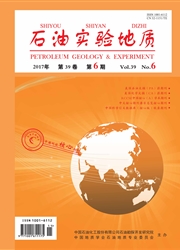

 中文摘要:
中文摘要:
通过扫描电镜,发现贵州松林地区下寒武统牛蹄塘组硅质岩中存在一种微型的硅化管状生物化石。该化石残片以管壁多孔为特征,管体直径仅有470 nm左右。该化石在某种程度上反映了海绵动物的一些特征,是一种新的物种类型。烃源岩的发育与生物作用密切相关,所发现的可疑管状化石可能揭示出当时水体中富含生物,这有助于解释硅质岩中较高的有机碳含量值。遵义牛蹄塘组底部硅质岩形成于受热水影响的深水陆棚沉积环境,这是烃源岩形成的有利沉积相。
 英文摘要:
英文摘要:
A new type of silicic tube fossil is discovered from the lower part of Niutitang Formation(Lower Cambrian) in Songlin,Guizhou Province.The founded tube fossils are characterized by porous tube wall,and are only 470 nm in diameter.They are regarded as a new species,and might in some cases reflect characters of spongia.The development of source rocks is closely related to ancient biology activities.The doubtful tube fossils may indict many life activities in ancient water,which is helpful to explain why the silicalite has a high TOC.The silicalite is thought to deposit in deep-shelf environment influenced by hot water,which is beneficial for the formation of high quality source rocks.
 同期刊论文项目
同期刊论文项目
 同项目期刊论文
同项目期刊论文
 Alastuey Andrés, Querol Xavier. Mineralogy and geochemistry of the Late Permian coals in the Huaying
Alastuey Andrés, Querol Xavier. Mineralogy and geochemistry of the Late Permian coals in the Huaying Formation mechanism of high quality marine source rocks - Coupled control mechanism of geological en
Formation mechanism of high quality marine source rocks - Coupled control mechanism of geological en 期刊信息
期刊信息
